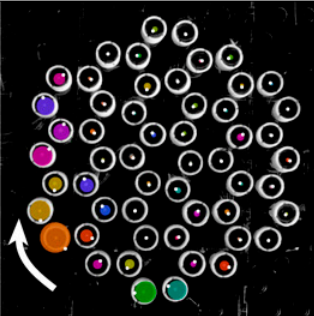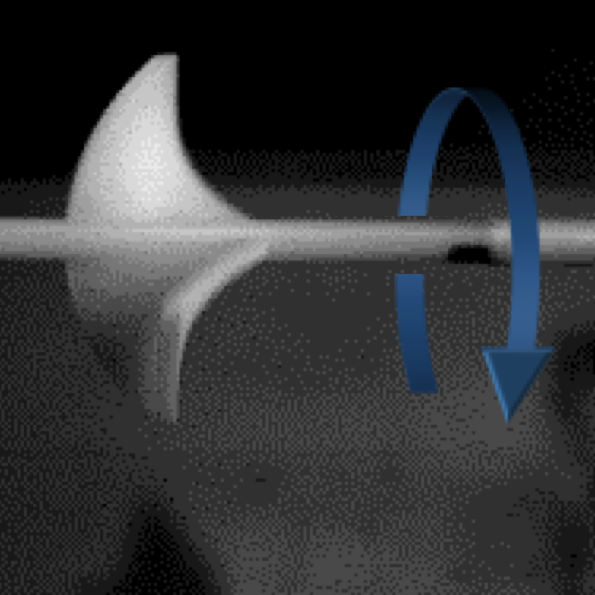One of the grand challenges in the physical and engineering sciences is to understand and design materials and complex fluids with desirable properties. We are investigating the role that topology and activity can play in meta-materials and complex fluids by designing and constructing topological mechanical meta-materials and active colloidal fluids. A recent breakthrough has been the construction of a gyroscopic meta-material and the observation of chiral edge states [1]. Surprisingly, amorphous structures can also support these waves [2] and pass through topological phase transitions [3].

We study vortex dynamics in experiment using vortices in fluids as a model system. A recent advance [1] allows us to create vortices of controlled shape and topology which we image using a scanning tomography setup in three dimensions at high speed (~10 GVoxels/second). Open questions include the role of vortex reconnections in dissipative flows, the extent of topological conservation laws in real fluids and general aspects of vortex dynamics.

While tying a shoelace into a knot is a relatively simple affair, tying a field, for example a magnetic field, into a knot is a different story: the entire space-filling field must be twisted everywhere to match the knot being tied at the core. This interplay between knots and and the space they live in lies at the heart of modern topology; beyond the world of mathematics, there is a growing realization that knots in space-filling fields are an essential part of physical processes spanning classical and quantum field theories, liquid crystals, electromagnetism, plasmas, and quantum and classical fluids. Linked and knotted structures in free space electromagnetic fields provide an opportunity to study a nontrivial topological structure in the setting of a linear field theory as well ad a means of potentially transferring knottedness to matter [1], [2], [3]. Taking this as a starting point we are elucidating the 'rules' for the mathematical construction and dynamical evolution of knotted fields in general.

We study open questions in equilibrium and non-equilibrium many-body physics, often with an emphasis on problems in which geometry and topology provide the key to understanding the physical phenomena we observe. Using colloidal particles, (both spherical and shaped), fluids and foams, we study the self-assembly and properties of ordered and disordered phases, while developing methods to control them. Examples include studying the interaction of topological defects with curved space [1], defect dynamics [2], and the packing of 'superballs' [3].

In collaboration with Efi Efrati, we are studying phenomena that exhibit chiral behavior and developing conceptual frameworks for their quantification, leading to improved designs for chiral materials. See our recent manuscript [1] for more details.

We are developing model systems to control and investigate the physics of material fracture and shock propagation. In one investigation, we found that conforming elastic sheets to curved substrates controls the behavior of cracks. By patterning the curvature of a rigid substrate, we can tune and design the paths of cracks in thin sheets. See our manuscript [1] for details.



